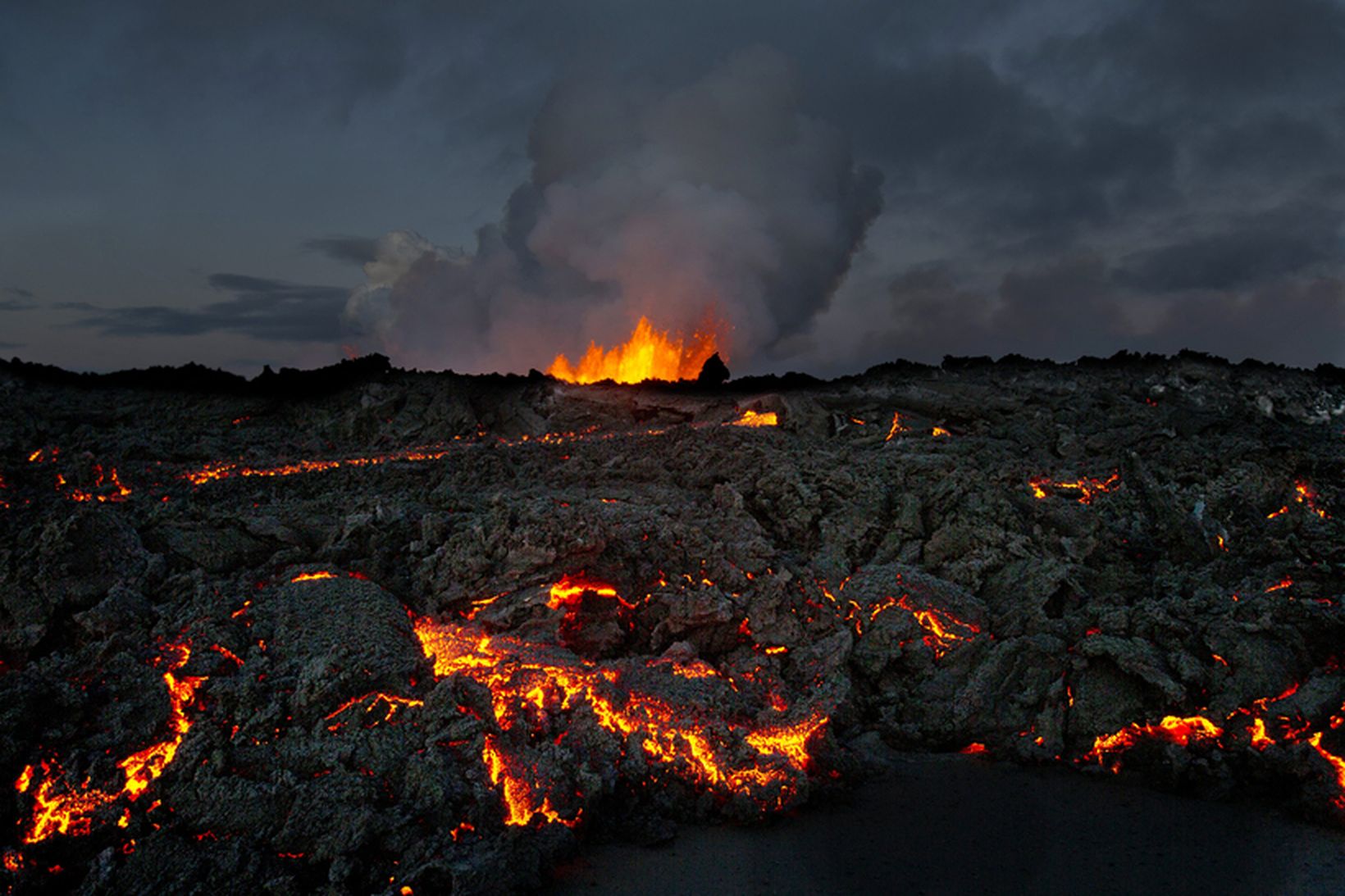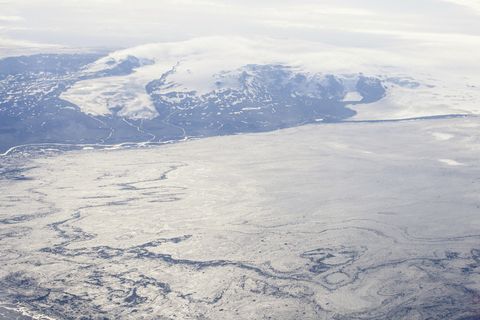The eruption does not seem to be declining
Lava production continues with the same strength.
mbl.is/RAX
The volcanic eruption in Holuhraun continues with similar rate as last few days. The eruption does not seem to be declining. The lava production continues with the same strength. The lava flow is now around the centre of the lava field, which is now around 37 square kilometres.
According to new measurements the total volume of the lava is 0,4-0,6 cubic kilometres and the magma flow 250-350 cubic meters pr. second.
The subsidence of the Bardarbunga caldera continues with same rate as before.
Big earthquakes are still detected in the Bardarbunga caldera. Since noon yesterday there have been 12 earthquakes bigger the M3, 0. The biggest one was measured M5,5 at 10:51 yesterday morning making it the second biggest earthquake since this wave of seismic activity started on August 16. Smaller earthquakes were detected in north part of the dyke and around the eruption site. Earthquakes up to M4 have been measured under the north-north-west slopes of Bardarbunga.
Most roads in Iceland are open and accessible including the Ring road (nr. 1) around Iceland and safe for travelling. However, due to the volcanic eruption in the area north of Vatnajökull glacier, the highland north of Vatnajökull glacier is closed for all traffic. The website on safe travel in Iceland www.safetravel.is is updated regularly and so are their information screens around Iceland. A live webcam of the eruption can be found at www.livefromiceland.is. All airports in Iceland are open.
Three scenarios are considered most likely:
The eruption on Holuhraun declines gradually and subsidence of the Bardarbunga caldera stops.
- The eruption on Holuhraun declines gradually and subsidence of the Bardarbunga caldera stops.
- Large-scale subsidence of the caldera occurs, prolonging or strengthening the eruption on Holuhraun. In this situation, it is likely that the eruptive fissure would lengthen southwards under Dyngjujokull, resulting in a jokulhlaup and an ash-producing eruption. It is also possible that eruptive fissures could develop in another location under the glacier.
- Large-scale subsidence of the caldera occurs, causing an eruption at the edge of the caldera. Such an eruption would melt large quantities of ice, leading to a major jokulhlaup, accompanied by ash fall.
Other scenarios cannot be excluded. There is still a risk of flood in the area north of Vatnajökull.



 Myndskeið: Segjast hafa skotið niður sprengjuflugvél
Myndskeið: Segjast hafa skotið niður sprengjuflugvél
 Almannavarnir hækka viðbúnað
Almannavarnir hækka viðbúnað
 Aðeins ein leið fær í Grindavíkurmálum
Aðeins ein leið fær í Grindavíkurmálum
 Gerir ráð fyrir 150 samningum í næstu viku
Gerir ráð fyrir 150 samningum í næstu viku
 Ísraelar hefna árásarinnar
Ísraelar hefna árásarinnar
 Færa slökkviliðið til nútímans
Færa slökkviliðið til nútímans